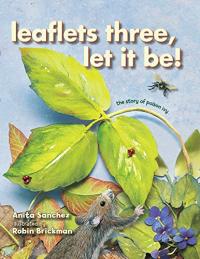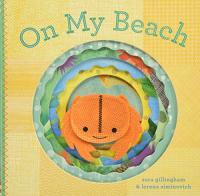
From whales to wasps, glimpses into animal behavior makes for intriguing reading. A pig eating python concludes the brief, engaging book illustrated with cut and torn paper collage. Back matter includes a bit more detail about the creatures described.
How to Swallow a Pig: Step-by-Step Advice from the Animal Kingdom

Follow three scientists as they study the osprey, a fascinating raptor, in and around Missoula, Montana. How these large birds are tracked and studied is revealed in a highly accessible well-researched text and color photos. Further information appears in sidebars and back matter.
The Call of the Osprey

In this Magic Tree House story, Jack and Annie’s vacation in the glorious waters off Mexico’s Yucatan peninsula doesn’t turn out quite like they expect. An encounter with sharks and with a Mayan girl plus a bit of magic create another satisfying, fantastical adventure in the series. A companion book, Sharks and other Predators (opens in a new window) helps readers separate fact from fiction.
Shadow of the Shark

As it changes its appearance throughout the seasons, this plant also provides food for different birds and animals. But many people see poison ivy as a nuisance only for the itchy, sometimes dangerous reaction to it when they come in close contact with it. This attractive and informative introduction to poison ivy is handsomely illustrated with a brief but engaging text.
Leaflets Three, Let It Be!

A girl explains how her family once hunted whales but now use their family-owned boat to take tourists out to whale watch. Illustrations in color show the contemporary narrator and boat, while sepia-toned images depict the history. Interesting bits of African American history are embedded in this engaging, educational, and accessible story.
Whale Trails: Before and Now

Creatures of the far north can call on the Strength of the Land to do what they want. When Raven becomes jealous of Walrus’ useful curved tusks, Raven freezes the sea, trapping Walrus. Walrus breaks free, making his once curly tusks short and straight, which they remain to this day. This is a dramatically illustrated and well-told pourquoi (why) tale.
The Walrus Who Escaped

Birds aren’t the only animals to make their homes in nests. Other nest-dwellers include insects, turtles, even orangutans. Handsome, detailed illustrations and an informative text (which can be read either in detail or for the main theme) appealingly present these animal homes and their residents.
A Nest Is Noisy

A boy spends the day enjoying and learning with his grandfather, his tata, who is known in the community to help people feel better with his knowledge of herbal remedies. Realistic illustrations depict the minor mishaps (e.g., a bee sting, a bump on the head) and the apparently botanically accurate plants from which they are derived. The culturally rich text is in both Spanish and English.
My Tata’s Remedies / Los remedies de mi tata

Which is more amazing, the vampire squid or the blue whale? Could it be the leafy sea dragon or the wolffish? Characteristics of these and many other amazing sea creatures suggest that it is the most amazing but it is the reader who must decide. Stunning, realistic illustrations of each animal in its likely environment and fascinating facts present a host of remarkable beings.
The Most Amazing Creatures in the Sea

An entire community comes together to create and learn from a garden. Students with their teachers plant a variety of edible plants from tomatoes to radishes. They explore insect residents of the garden and more. Finally, everyone comes together to enjoy the harvest. Photographs and a conversational text document this pleasure of a garden project.
It’s Our Garden: From Seeds to Harvest in a School Garden

Poetic verse alternates with information about the flowers that attract a variety of animals and insects. Text appears on evocative illustrations in a horizontal format that suggests the expanse of the gardens and fields. A bit of additional information and link to a guide appear at the conclusion.
Flowers Are Calling

Animals, like people, have faces. And faces have amazing features; for example, a panda’s furry face keeps it warm, a ladybug’s antennae smells, and large ears help bats hear. Explore these and other senses in crisp text and lots of photographs in an attractive, accessible format. A code for a supplemental digital book is included to continue the exploration.
Animal Faces

Lyrical language and handsome, realistic watercolors present water in its many forms, from liquid to snow. Water is also in things like mud and even apples. Additional information about the processes seen and further readings concludes this striking and informative look at water.
Water Is Water

Even when it’s too early to plant, there’s a lot going on underground. When a grandmother and her grandchild do plant, they tend the garden until it’s harvested and even then there’s a great deal of activity down in the dirt. Richly colored illustrations show both on top and underneath the garden.
Up in the Garden and Down in the Dirt

Many animals on land and in the water, familiar and exotic, have spots — seen here through brief, poetic language and carefully crafted illustrations: “Spots with purpose, spots with flair. Spotted creatures everywhere!” Additional information about the animals and where they live concludes this handsome informational book.
Spectacular Spots

Some creatures that live in oceans have skeletons, others don’t. Meet a colorful variety of them in this exploration of sea animals from jellies to clown fish in this playful but informative introduction. A chart of “sea facts” concludes this book that can be read with or without the extra information presented in a different typeface on each double-page spread.
Sea Bones

From fish to produce, the detailed maps and a list of things to find on each double page spread, demystify how the produce sold at a farmers market gets there. Sophisticated children will be able to follow the maps; younger children will look for specific objects in this attractive book that requires keen sight and much examination.
Market Maze

Hippos are indeed huge. They can also be dangerous as they’re fast and have razor-sharp teeth. An informal narrative and dramatic illustrations combine with factual information in this engaging and fascinating look at a very big creature.
Hippos Are Huge!

What makes a bird different from other animals that also have a beak, wings, and lay eggs? It is feathers, of course — bright or dull, on birds tall or small. Easy text and realistic illustrations show familiar and less well known birds in this appealing and informative book.
A Bird Is a Bird

Follow a honeybee as it travels to a prairie in bloom to gather nectar and return to let other bees know of the place. Bold collages of honeybees from varied perspectives present the environment and hive. Additional information about the honeybee dance concludes this compelling look at a fascinating process.
Bee Dance

From planting to harvesting, Stanley grows wheat on a large farm. Cartoon illustrations of the charming hamster-as-farmer present a straightforward, simplified look at typical activities.
Stanley the Farmer

Die-cuts in concentric circles on sturdy boards are used to focus on a small sand crab’s beach. Small fingers can animate the crab with a finger puppet that is affixed to the book.
On My Beach

What can you “peek-a” through the die-cut window? Does it “moo”, say “boo” or could it be YOU? Turn the page and find out! A predictable format and bold illustrations are sure to engage and delight.
Peek-a Who?

Twelve poems for each of the four seasons come together to provide a unique perspective of the seasons.
